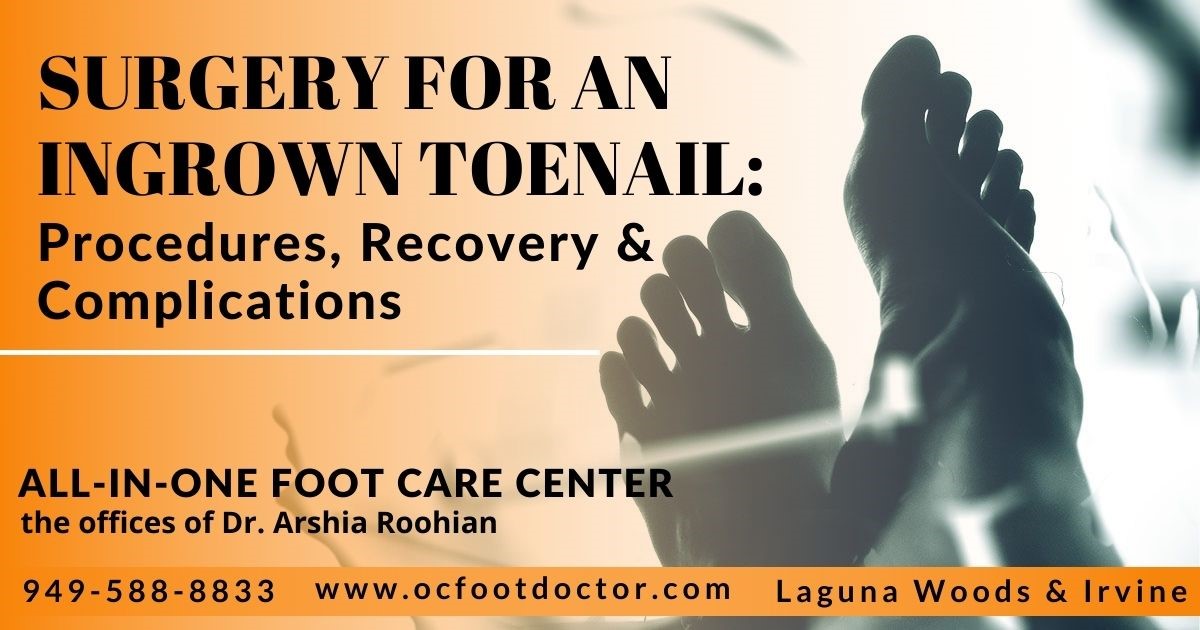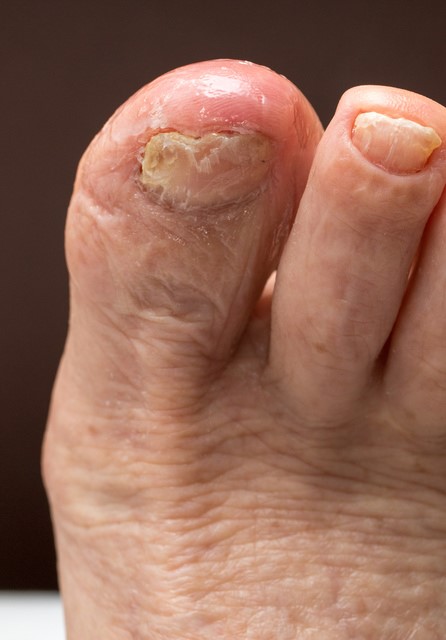Surgery For An Ingrown Toenail: Procedures, Recovery & Complications

Ingrown toenails: what are they?

Toenails that grow inward are known as ingrown toenails because they have become curled or embedded into the skin on the side of the foot. The big toe is usually affected, but any toenail can suffer from this problem. There are many reasons why toenails ingrown, including trauma, clipping too short, tight-fitting shoes, and hereditary factors. A severe case of the condition can result in drainage and infection. Symptoms include pain, localized redness, and swelling. A topical antibiotic ointment and Epsom salt soak can be helpful home remedies. It should be removed by a podiatrist if there is persistent pain or infection.
The procedure of ingrown toenail surgery is what it sounds like.
A local anesthetic is used to perform ingrown toenail surgery in the office. The toe is injected with a local anesthetic called Novocaine after receiving two shots at the base. A numb feeling appears in the toe after 10 to 15 minutes. After the nail has been numb for a few minutes, it is cut using a clipper designed for ingrown toenails. After removing the offending border, small forceps are used. This procedure does not remove the entire toenail, only the part that has been invected. When the nail bed is cauterized and recurrence is prevented, a dilute acid called Phenol is used. As soon as the procedure is completed, a soft dressing and antibiotic ointment are applied to the toe.
.jpg)
Having an ingrown toenail surgically removed, how long does the recovery take?
Ingrown toenails are removed the day before, and afterward, patients should be at home, elevated, and off their feet. There is no need for crutches. A higher elevation reduces drainage and swelling on the foot. It is possible to resume normal bathing in the evening after the ingrown toenail procedure has been performed. Following the procedure, you can reduce redness and swelling by soaking in warm Epsom salts for five minutes once or twice a day. For the first two weeks following surgery, a topical antibiotic ointment is applied to the toenail daily and covered with a band aid. Ingrown toenail surgeries usually result in the return of normal shoes within one or two days.
Amputation of an ingrown toenail can result in a number of complications.
There are very few complications associated with ingrown toenail removal. An infection or recurrence of the infection is possible, as are recurrences, visible narrowing of the nails, thickening, or discoloration of the nails. One of the most common complications following surgery is a recurrence of an ingrown toenail. According to estimates, this occurs 8% of the time. Ingrown toenails can occur multiple times in one patient. A frustrating situation like this can arise. By removing a sliver of the nail plate, the ingrown toenail surgery narrows the nail plate slightly. It may be bothersome to some patients if their toenails narrow after multiple ingrown toenail procedures. The occurrence is uncommon, however. It is also possible for toenails to thicken as a result of this procedure. Sometimes, a thickened and discolored toenail will grow back after being traumatized or infected. During the regrowth of the nail, the nail bed can become scarred from injuries and infections. Surgically removing an ingrown toenail can also cause infection. Usually, a course of oral antibiotics is sufficient to cure this type of infection, paronychia.
Dr. Roohian recommends seeing a podiatrist if you have recurrent ingrown toenails or if home remedies haven't worked. You can contact our office at 949-588-8833, or visit our website at https://www.ocfootdoctor.com/. Our offices are located in Laguna Hills, Irvine, Mission Viejo, Aliso Viejo, Lake Forest, Foothill Ranch, and Costa Mesa.


